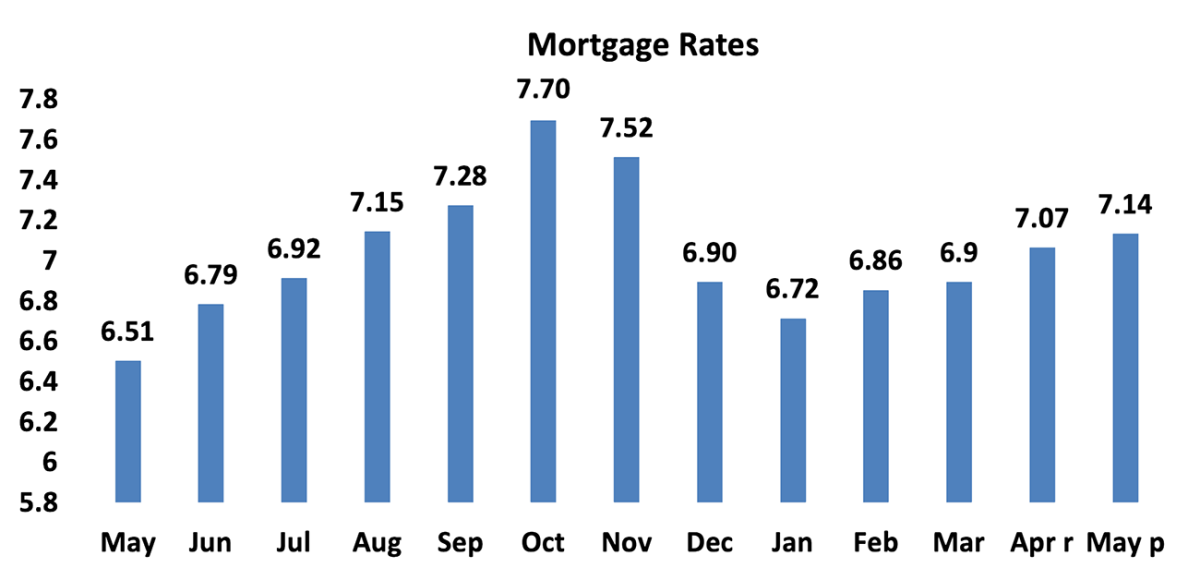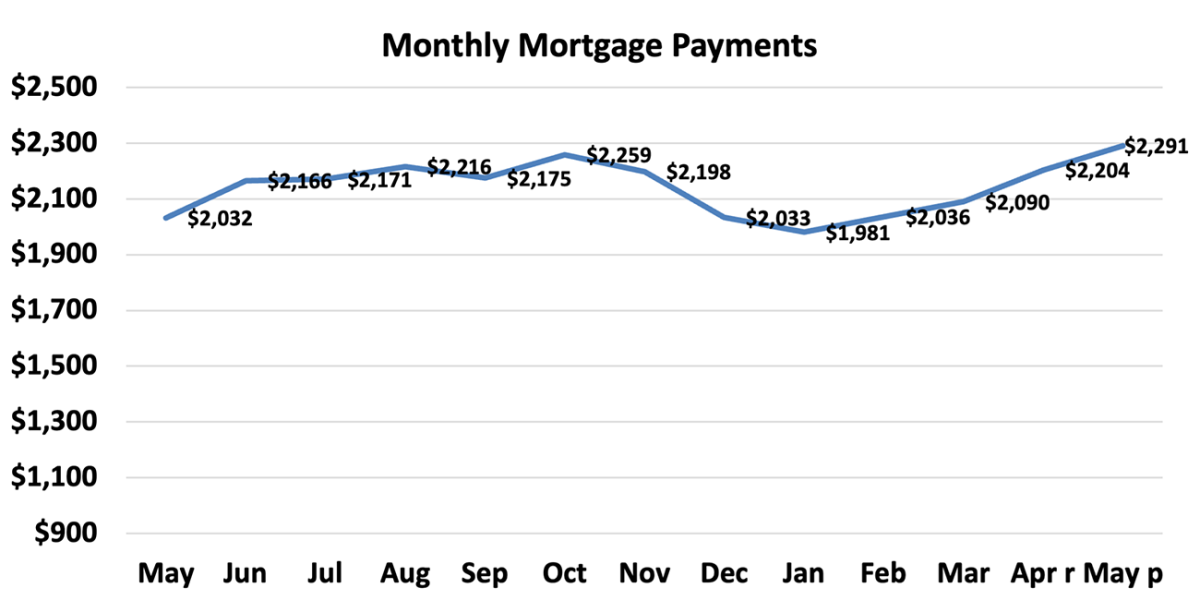The Housing Affordability Index: Home Prices Surge and Rising Mortgage Rates Troubled Affordability in May 2024

According to NAR's Housing Affordability Index, housing affordability declined nationally in May compared to the previous month. The monthly mortgage payment increased by 3.9%, while the median price of single-family homes rose by 5.7% (from $401,500 to $424,500) year-over-year. The monthly mortgage payment increased by $87 from last month.
Compared to one year ago, affordability fell in May as the monthly mortgage payment climbed 12.7% and median family income rose by 5.3%. The effective 30-year fixed mortgage rate was 7.14% this May compared to 6.51% one year ago. Nationally, mortgage rates were up 63 basis points from one year ago (one percentage point equals 100 basis points). Mortgage rates moved above 7% for the second time since last year (November 2023). The median existing-home sales price rose by 5.8% to $419,300 compared to one year ago ($396,500).
The national index is currently below 100, which means that the typical family cannot afford to buy based on the median-priced home. An index below 100 means that a family with a median income had less than the income required to afford a median-priced home. The income required to afford a mortgage, or the qualifying income, is the income needed so that mortgage payments on a 30-year fixed mortgage loan with a 20% down payment account for 25% of family income. The most affordable region was the Midwest, with an index value of 120.3 (median family income of $99,752 with a qualifying income of $82,896). The least affordable region remained the West, where the index was 66.8 (median family income of $111,727 and the qualifying income of $167,136). The South was the second most affordable region with an index of 95.7 (median family income of $94,272 and the qualifying income of $98,544). The Northeast was the second most unaffordable region with an index of 90.5 (median family income of $114,506 with a qualifying income of $126,528).
A mortgage is affordable if the mortgage payment (principal and interest) amounts to 25% or less of the family’s income.
Housing affordability declined in all four regions from a year ago. The Northeast region experienced the biggest decline, 10.1%, followed by the Midwest, which dipped 7.1%. The West experienced a weakening in price growth of 5.9%, followed by the South, which fell 4.1%.
Affordability fell in all four regions from last month. The Midwest region had the biggest decline of 4.8%, followed by the Northeast with a fall of 4.4%. The South had a decrease of 2.2%, and the West had the smallest reduction of 0.7%.
Compared to one year ago, the monthly mortgage payment rose to $2,291 from $2,032, an increase of 12.7%. A year ago, the monthly mortgage payment increased by $259. The annual mortgage payment as a percentage of income inclined to 26.9% this May from 25.1% from a year ago. Regionally, the West has the highest mortgage payment to income share at 37.4% of income. The Northeast had the second-highest share at 27.6%, followed by the South at 26.1%. The Midwest had the lowest mortgage payment as a percentage of income at 20.8%. Mortgage payments are not burdensome if they are no more than 25% of income.
Home prices are still outpacing median family incomes. Mortgage rates have been above 7% for two consecutive months. Coming back down below 7% will certainly be helpful to potential home buyers. Last week, the Mortgage Bankers Association reported that mortgage applications decreased 2.6% from one week prior. Housing inventory is increasing, so that is a good sign for potential home buyers.
The Housing Affordability Index calculation assumes a 20% down payment and a 25% qualifying ratio (principal and interest payment to income). See further details on the methodology and assumptions behind the calculation.
Categories
Recent Posts











5966 Fairview Rd, Suite 400, Charlotte, NC, 28210, United States






